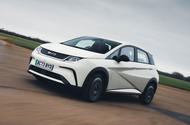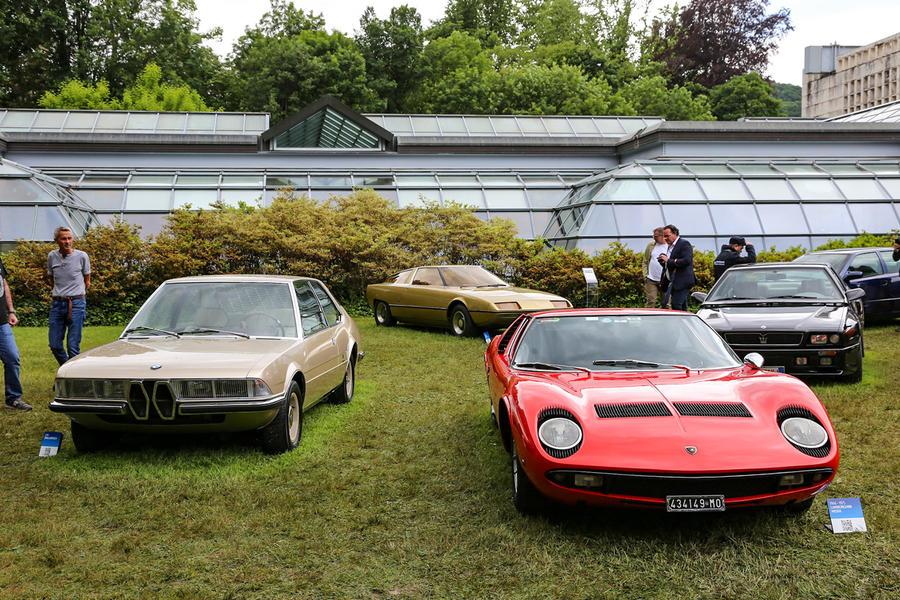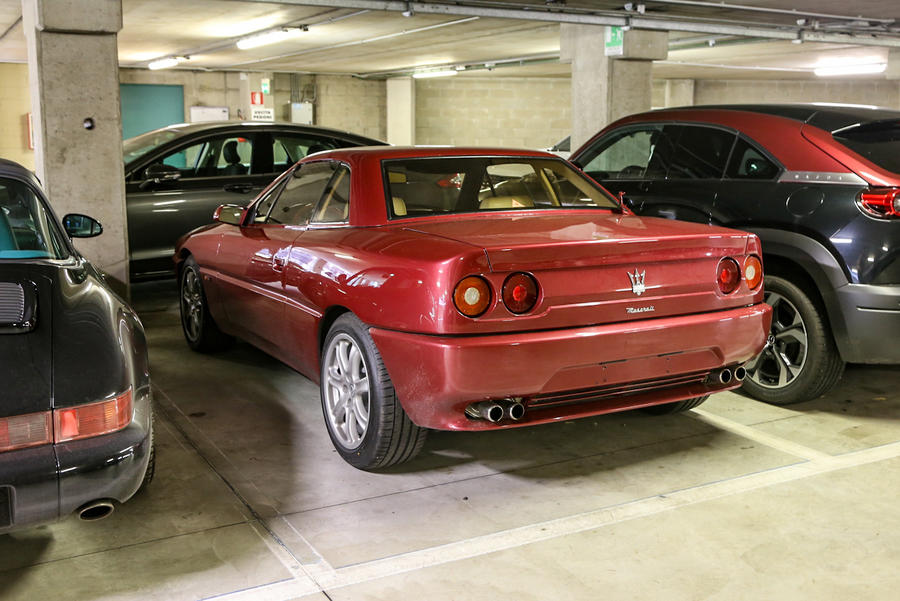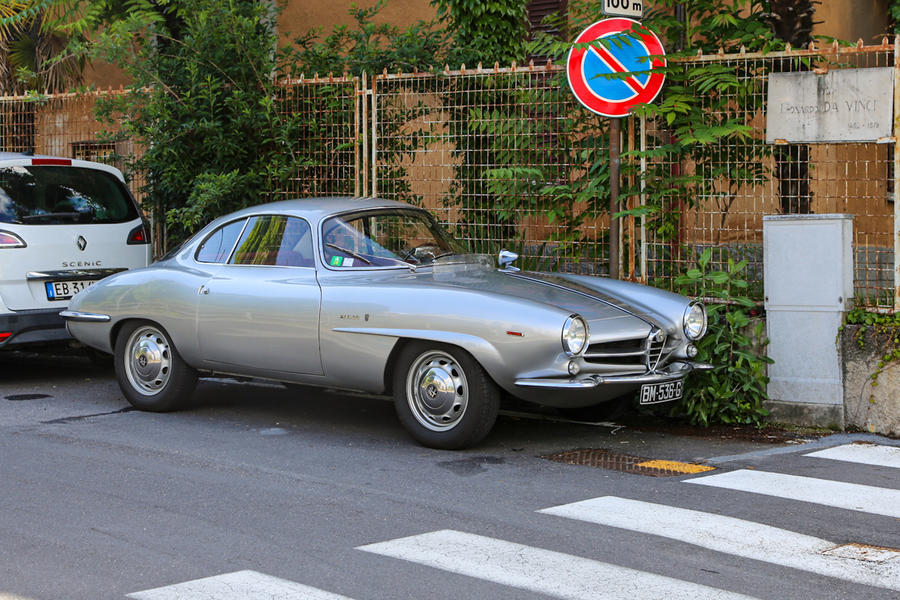Opinion
Chinese EV Tariffs Could Backfire on Europe: Editor’s Letter | Giga Gears
 The European Commission yesterday announced Chinese EVs could be hit with tariffs as high as 38.1%
The European Commission yesterday announced Chinese EVs could be hit with tariffs as high as 38.1%
The European Commission’s four-week countdown to impose additional tariffs as large as 38% on Chinese electric cars could ultimately do more harm than good to European car makers.
While the EU tariffs may protect European car makers in the short term from a price war with lower-cost Chinese cars in Europe, and in the medium to long term encourage more European production of Chinese electric cars that would be bring significant investment and jobs to the region, the threat of retaliatory tariffs in China would hurt profit margins and thus slow down investment in the EV development of Europe's own.
Beijing has already made such threats. "China will take all necessary measures to firmly safeguard its legitimate rights and interests," Lin Jian, the Chinese foreign ministry's spokesperson, said in response to the European Commission's report.
A tariff aimed specifically at large combustion-engined cars that European car makers still make considerable hay on in China has been mooted. So it's unsurprising that the premium giants of the German car industry have all spoken out against the EU tariffs.
"The true test from today's announcement will be whether Beijing will retaliate in kind, or come to an amicable solution," Will Roberts of research firm Rho Motion told Reuters. "Europe's manufacturers still rely on the Chinese market, so declining profits from the East would only slow their ability to transition effectively."
The report itself makes for remarkable reading into just how great an advantage Chinese car makers enjoy on cost and state support.
It reveals that Chinese car makers gain state support at every stage of an EV's manufacture, from mining the raw materials in the batteries to the shipping containers that take them to Europe. There are tax breaks and other financial support measures every step of the way.
It's no wonder, then, that the sentiment among analysts is that Chinese electric cars will still enjoy a cost advantage and bigger profit margins over European electric cars even if tariffs are imposed.
Citi analysts told the FT that BYD could still expect profit margins of 8% even after being hit with its specific 17.4% tariff, which is a greater profit margin than it enjoys in its domestic market.
It remains to be seen whether the UK will follow the EU's lead, but this will not be a serious issue in the general election and it is unlikely to be an immediate priority for a new government. One European executive told Autocar it was inevitable the UK would follow suit, given the close policy relationship between the UK and EU in the automotive sector.
The Chinese companies now have four weeks to respond to the European Commission's report. However, given the lack of cooperation from some car makers, China's language in response and the detail and extensiveness of the European report that took nine months to compile, it’s hard to see how this plays out any other way than tariffs.
While it is bold action from the European Commission and might appear necessary at face value, the widespread dissatisfaction from European car makers in response could make this a case of 'be careful what you wish for'.
McLaren’s Overlapping Models: A Barrier to Success?
 McLaren has not been without ongoing problems, having lost £873 million last year
McLaren has not been without ongoing problems, having lost £873 million last year
I just briefly opened LinkedIn to check on responses to a job ad I'd shared, and I scrolled quickly through some posts written in curiously short sentences. Like this. But each a new paragraph too. I noticed a picture of a car.
It was only on the screen for the briefest flicker of a moment as I scrolled past, but I immediately knew who had made it: not by colour, nor by location, but because its doors were open. Ah, dihedral doors: a McLaren! A glimpse was enough for it to be immediately recognisable.
Now, McLaren has not been without ongoing problems. It lost £873 million last year, prompting Bahrain's sovereign wealth fund, already its biggest stakeholder, to take full ownership in April. The company's first quarter of this year was better, following the launches of the 750S and Artura, but still wasn't ultimately profitable.
And noting how hard it is for an independent car maker with a small range and small sales to make money, McLaren says it is "continuing to explore OEM and/or technical partnerships with industry partners".
While we love driving McLaren's cars, I think of its range as quite crowded. In last month's Q1 earnings release, McLaren said it operates in "distinct segments", including Grand Tourer (GTS), Supercar (Artura) and Supercar (750S).
But I'm not sure how distinct those segments truly are. These are all two-seaters, mid-engined, similarly tubbed and similarly proportioned.
And if you browse the McLaren Cars website for the GTS, it mentions the car being a 'supercar' or having the DNA of one six times but doesn't use the term 'grand tourer' or 'GT' once. If a customer-facing blurb doesn't make its purpose distinct, what chance for the potential buyer?
Perhaps as a result of this crowding, I couldn't have told you which McLaren I scrolled past today, but I thought it at least encouraging that I knew in an instant who had made it. McLaren first used dihedral-opening doors on the F1, and they were later adopted by the 'new range of cars that began with 2011's MP4-12C.
They have been used on every model since, bar the doorless Solus GT (from McLaren's Ultimate range, the one truly differentiated area of the model line). On seeing them today, I felt a bit differently about them. Those doors felt like heritage.
Only 13 years of it in 'new McLaren Automotive terms, but still. They didn't seem novel; they felt established. Despite the ongoing troubles, I felt encouraged by that, too.
UK Car Market Trends to Watch | Giga Gears Editor’s Letter
 The headline figures suggest an increasingly healthy UK car market
The headline figures suggest an increasingly healthy UK car market
Five months into 2024 and the headline figures suggest an increasingly healthy UK car market. There have been 22 straight months of growth, albeit total sales are still 20% short of pre-Covid levels.
This year, the overall market figure is not the main headline, but rather the proportion of sales that are electric, given the introduction of the ever-popular ZEV mandate and its requirement for 22% of new car sales to be electric this year.
The current run rate for the year is 16.1%, marginally up on the 15.7% market share for EVs at this time last year, although May’s share was higher at 17.6%, suggesting progress is being made.
However, a worrying gap still exists and it shows no sign of being filled. While sales of EVs to fleet buyers continue to grow, sales of EVs to private buyers actually dropped year on year in May, even with healthy incentives being offered by several car makers.
The SMMT, which publishes the monthly data, has renewed its call for incentives to be introduced to stimulate private demand in EVs that car makers are required by legislation to sell.
SMMT boss Mike Hawes said: “Manufacturers can’t sustain this scale of support on their own indefinitely.” He also said halving VAT on the sale of new EVs and cutting VAT on public charging from 20% to 5% would be among measures that would result in more than 250,000 EVs being bought instead of petrol and diesel models over the next three years.
With a general election called for 4 July and no automotive policy statements yet made from any major political party, such support will not seem to be forthcoming any time soon.
If the status quo were to continue, the answer you get about whether or not the 22% target will be achieved this year depends on which car maker you’re speaking to. Ford publicly has said that in order to hit the target, sales of non-EVs will need to be throttled back – a threat also made by Stellantis CEO Carlos Tavares. Most are more tactful, saying they will comply using more conventional means, such as hitting the target this year, deferring to future years, or using credits for ‘over-performance’ in lowering CO2 in previous years.
One car maker with a more extensive range of EVs has told me they are seeing demand from private buyers, yet it’s the ‘newness’ factor of EVs that is driving sales in this part of the market. If you have a fresh new model, a track record in EVs and dealers clued up on how to sell them, then ZEV mandate compliance is achievable.
Such mainstream car makers remain in the minority for now. While the EV percentage of a car maker’s sales is the first port of call on the monthly sales spreadsheet from the SMMT, the figures are also packed full of other interesting snippets and there are fascinating stories emerging wherever you look in sales charts.
BYD is getting a foothold in the UK market. Its 2207 registrations to date are around three times that of Alfa Romeo and just ahead of Polestar (whose sales are down 64% year on year, as it rolls out a new 2 and prepares for the launch of the 3 and 4). Yet BYD’s momentum builds each month and in May it sold more cars than Fiat.
Seat’s market share increase is surprisingly growing faster than Cupra's, and it’s worth noting that Seat still remains a bigger brand in the UK than its younger sibling. Seat has sold 18,155 cars in the UK so far this year to Cupra’s 11,256.
Toyota, Hyundai, Audi, Citroën and Tesla are among the big names to go backwards so far in 2024, none of whom has been able to offer a best-selling model with that ‘newness’ factor so far this year. Expect most to recover.
You have to wince at DS's sales, down 61% on a hardly stellar 2023, and it lags behind GWM Ora and KGM (the new Ssangyong) for sales.
BMW's sales are up and close to 40% this year, and it is the UK's second-largest car brand in 2024 to date. It doesn't work like this, of course, but if you did add Mini's sales to BMW's, then it would be number one ahead of Volkswagen.
Renault is among the other brands flying. Its sales are up 72% year on year, with daylight returning between it and Dacia (Renault has sold 22,582 cars to Dacia’s 13,349) in the process.
The gap created by Ford stopping sales of the Fiesta has opened things up for Renault at that end of the market, and the absence of the Fiesta from Ford’s portfolio has meant its sales have dropped 16% so far this year. Ford now lags behind Audi, BMW, Kia and Volkswagen, with Nissan and its soon-to-arrive revised Qashqai in striking distance.
With talk of holding back sales further in pursuit of ZEV compliance, how times have changed for the Blue Oval in the UK.
Top Cars at Villa d’Este | Giga Gears
 The surprises that are found on display, parked up and tucked away are even better than the main event
The surprises that are found on display, parked up and tucked away are even better than the main event
The first thing that hits you when you enter Villa d’Este is the smell of cigars.
It’s a deep, rich, claggy stink that only some enjoy. But if you’re attending the Concorso d’Eleganza, you’re more than likely to be one of them.
In case you didn’t know, it’s a concours event that takes place on the western shore of Lake Como, Italy. Been going since 1929. Dead posh.
And you know what? It is good. There was some really cool stuff there this year.
The ‘Superstar cars of the video generation’ housed a McLaren F1 that went on to win the Coppa d’Oro Villa d’Este – the public referendum vote – while other fabulously elegant big hitters included a Zagato-bodied Maserati A6G/54 and an Aston Martin DB5 shooting brake.
But one thing that’s maybe not too apparent is that there’s not actually not a great deal to see. As a first-time goer, I was even a little bit taken aback by how little metal there was.
The video above – sped up, obvs – highlights this. But these are just the cars in the main site.
Down the road – a short boat ride for most – Villa d’Este spreads out, takes off its silk Hermes tie and wraps it firmly around its head.
The neighbouring Villa Erba is still extremely posh and the building itself a touch prettier than the Villa d’Este estate. But there are people here eating with improper cutlery. There are people wearing jeans. There are people vaping.
It’s all still officially part of the Villa d’Este thing, but it’s much more like a car show. There is a Gandini display - including a Citroën GS Camargue concept, a tonne of cool older stuff from the 1980s and 1990s and BMW’s X5 Le Mans concept that uses the same V12 as the McLaren F1.

I bump into a mate while walking around and he tells me there is more. But it's not here. It's down the road.
We hightail it out of there, but before making a date with his Lancia Ypsilon hire car, there are a couple more sights to see.
There are a few public car parks kicking around and the stuff not on show is somehow also extremely alluring.
You may have seen a hashtag floating around on social media lately: #alwayscheckthecarpark. It’s a cliché, but it’s a cliché for a reason.
There is cool stuff you rarely see elsewhere. An Alfa 75 Turbo? Sure. A tiddly Fiat 850 Sport Racer, complete with white racing stripe, parked behind a Bentley Continental R with a beige roof? Good stuff. A one-of-a-fricken-kind Maserati Shamal Spider prototype? Why the hell not?!

Out of the underground and into the light. The sun is baking now as we hit 3pm. A slew of classics, such as a Zagato-bodied Lancia Fulvia, pass me on the street.
Our final stop of the magical mystery tour is set in a truly magical place. It’s called the FuoriConcorso. This isn’t as old or as prestigious as Villa d’Este but it is slightly cooler. A bit if you know you know. Some might even call it underground.
I wouldn’t because the venue is actually set on a series of bloody steep hills and it is still boiling hot.
The first display is a set of British Formula 1 cars from across the eras and, as I ascend, around every corner I discover something extremely cool. From a Morgan +8 GT1 race car to an Autobianchi Giardiniera.
Manufacturers have cottoned on to it. Koenigsegg (along with its founder) is here and Alpine is showing off its collab with Zagato.
To top it off, I spot an Alfa Romeo Giulietta Sprint Speciale parked in the street on my walk back to the hotel. £100k of Bertone goodness hurriedly abandoned next to a Renault Scenic.
Villa d’Este, on the surface, might refer to one regal building and the Concorso d’Eleganza that goes with it. But don’t get weighed down with the nomenclature. This is an automotive extravaganza that sprawls far beyond the remit and the grounds of a 16th century villa.

Automated Driver Assistance Systems Fail | Giga Gears

The EV9 is a cracking car on the whole, but ADAS tarnishes its characterPrior has braking difficulties in a Kia EV9, causing him to question the reliability of software
Recently I was driving through Bakewell town centre. A lorry was coming towards me with ample room for both of us. It was mid-afternoon but wet.
As I neared a T-junction, a car approached, clearly preparing, and able, to stop at the ‘give way’ line. I was doing 20-25mph, my foot on neither pedal, in zero-regen mode in a Kia EV9, in my lane.
There was no impending drama; it was the kind of scenario you find in any town, on any day.
Until, that is, my car perceived a threat – presumably a combination of the car from the left and the oncoming lorry – saw no exit route and automatically emergency braked me to a standstill across the front of the T-junction.
It took no time at all. To the surprise of not only onlookers but also me, this SUV, unwanted and unasked, hauled itself to a stop, very quickly, in the middle of its lane without warning.
I swore, a lot, pushed the accelerator and drove away along the road that had been clear all along, embarrassed and annoyed. Then I parked up and went back to get a photograph.
If a vehicle had been following close behind, it would have been no surprise had it hit me. And I’d have had to admit to a scooterist with broken wrists that, yes, sorry, while you were riding perhaps a little too close, I can sympathise that you are as surprised as anyone that the car you were following rapidly became a solid wall.
I had the steering assist (annoying) and the speed limit assist (often wrong) disabled but left other driver assistance systems – including forward monitoring and emergency braking – in their default settings. It’s unusual for the automatic city braking feature to get things this badly wrong. I’ve recently had cars flash their concerns but not apply the brakes like this.
However, if any vehicle was going to show flaws in its driver assistance systems, I am less surprised to find it was a Kia, or a sibling brand from the Hyundai Motor Group.
We like the company’s cars a great deal (it’s why I was driving an EV9), but they do have some of the market’s most intrusive – let’s use air quotes – ‘advanced’ driver assistance systems.
It is not Kia’s fault the EV9 has so many. The EU and Euro NCAP insist on them while surely by now knowing they are not consistently reliable. The argument is that the intention is good, and that no harm – as here – should come from a car stopping, and that mostly it will get the calls right.
This is like saying you’re statistically likely to drop a jar of salad cream on your foot one time in a thousand; there’s a system to prevent that, but it will randomly pour its contents over you one time in a hundred. Thanks, then, but no.
When I got back into the EV9, otherwise such a good car, I spent 20 seconds disabling the ADAS where I could: the dash lit up with more orange than a lively Dutch football crowd, but it (mostly) left me alone thereafter. But its attention assist and lane assist can still cut in, and annoyingly so, when they don’t need to.
These flaws aren’t fundamental, but I’d urge the group’s, not just Kia’s, engineers to come here, make some assessment and amend how the systems function.
In the meantime, Kia has said: “The EV9 provides high levels of protection and safety and is one of the safest family cars on the road. No driver assist system is completely infallible, but the EV9 does a great job overall protecting families and other road users.”
A software update could sort it. And let’s be clear: Kia isn’t the only manufacturer that needs to look at these systems. Many are not good.
But there are broader conversations to be had about the role of software assistance. What’s the acceptable ratio for human-error incidents versus computer-error ones?
It’s comforting to think these systems are there for us, infallibly in the background, but if the Post Office Horizon IT scandal tells us anything, it’s to pause, and be curious, and question, and doubt. And if needs be, say it loud: this isn’t right.
